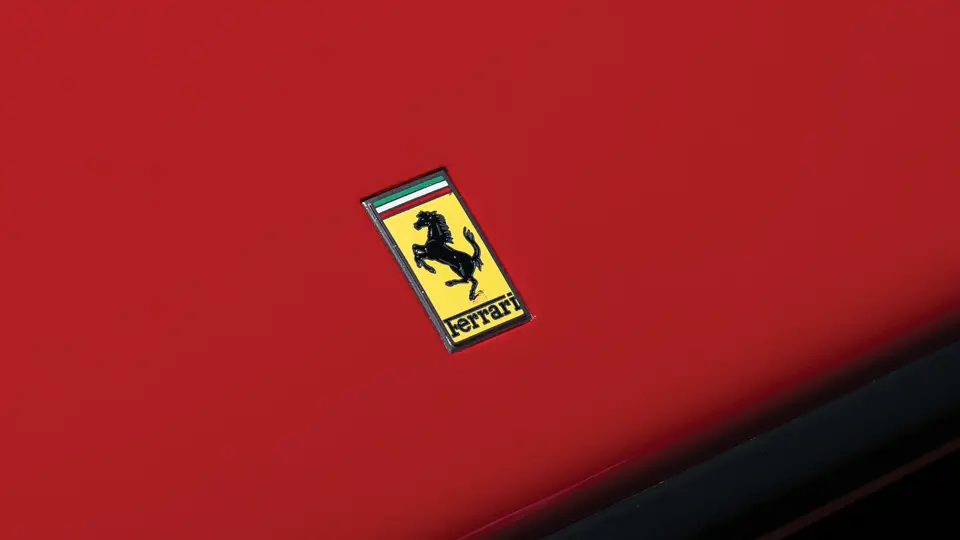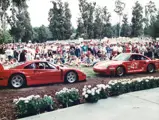
1991 Ferrari F40
{{lr.item.text}}
$1,682,500 USD | Sold
The Ming Collection
{{bidding.lot.reserveStatusFormatted}}
- Offered from the Ming Collection
- One of just 213 built for the U.S. market
- Only 1,705 miles from new; highly original example
- Includes owner’s manuals, tool set, and compressed air bottle
- Featured with an original three-piece Schedoni luggage set
- Maintained in climate-controlled facility; serviced in March 2019
- Ferrari Classiche–certified; original engine and gearbox
Enzo Ferrari remained at the helm of the automaker that bore his name for the next forty years, and he ensured that Scuderia Ferrari would always drive development of their road-going models. The company’s sports cars eventually became supercars, spurred by competition from Lamborghini in Bologna and Porsche in Stuttgart as well as by rapidly evolving racing rules. By the mid-1980s, Enzo himself knew that his days at the helm would eventually come to an end, and he wanted that end to come on a high note.
Enzo Ferrari’s pursuit of perfection resulted in the F40, and yet its execution was not simply an exercise in what could be done in Maranello. The F40 traced its roots to the 288 GTO, a homologation special designed for Group B racing that unfortunately never materialized. Spurred by the commercial success of the 288 GTO, Ferrari had a ferocious twin-turbocharged V-8 engine ready for an outlandish body and a fine-tuned chassis.
The car that debuted in 1987 looked like nothing Ferrari had done before. Pininfarina was commissioned to draw its angular lines, including the massive table-top rear spoiler. Certain cues, such as its wedgy shape, quartet of round taillights, and numerous air intakes, recalled the 288 GTO. And yet the F40 was clearly its own, a dramatic and controversial model that drew reactions like no Ferrari before. It was just what Enzo had in mind. Its carbon fiber, Kevlar, and aluminum construction ensured that it was obsessively light—as little as 2,400 pounds dry—a remarkable feat for a relatively large sports car with a monster of an engine.
Of course, the F40 was not a styling exercise. Plainly visible beneath the clear, louvered engine cover behind the passenger compartment was an enlarged version of the twin-turbo V-8 that powered the 288 GTO. A pair of IHI turbochargers teamed with Weber-Marelli electronic fuel injection delivered power in excess of 470 horsepower and a torque rating higher than 425 foot-pounds, though each car built was relatively bespoke. A five-speed manual transmission shuttled power to the rear wheels. Big Brembo brakes were behind 17-inch wheels held in place by special octagonal center locks. Underneath, the suspension was again based on the 288 GTO with a double-wishbone design. Later European-market models were built with a height-adjustable suspension.
Inside, the F40 was intentionally spartan, especially in contrast to the technology-laden Porsche 959 with which it was inevitably compared. Porsche intended for the 959 to be a flagship, combining luxury with performance and grip, while the F40 was narrowly focused on sheer driving performance. Its plain dashboard featured a rudimentary air-conditioning system largely intended to be used between track stints, but no audio system, carpeting, or power features were otherwise available.
Period automotive publications measured a 0–60 mph sprint in the 4.2-second neighborhood and a top speed that tickled 200 mph. Britain’s Autocar called it “scintillatingly fast.” Car and Driver, after borrowing a privately owned example in 1991, reported, “Nothing we’ve ever driven can match the mix of sheer terror and raw excitement of earth-scorching around in someone else’s three-quarter-million-dollar toy.”
This example, a U.S.-specification version, was finished in the traditional Rosso Corsa over red cloth seats. The car was delivered on 25 February 1991 to Classic Ferrari, Inc., in Richardson, Texas, and sold to the original owner, James M. Brown of Dallas, on 4 March. The F40 was almost immediately acquired by another local collector and has ever since been known to the curator of the Ming Collection. Several years after delivery, the F40 was displayed at the Hillsborough Concours alongside a matching red 959 in a celebration of modern supercars. Sparingly driven yet always maintained, in January 2000 the Ferrari was awarded a Platinum Award at the Cavallino Classic. Shortly thereafter, it was acquired by in the Ming Collection, in whose care this exceptional F40 has only been driven another 41 miles.
In 2004 an extremely rare factory-offered, European-market-only variable height suspension system was retrofitted to the car by a factory-trained marque specialist. As with the other cars in the collection, the F40 has been serviced on a time-related schedule, regardless of miles accumulated. In March 2019 the most recent of these services was performed, with a mileage reading of 1,705 original miles.
Included with the car are its original owner's manuals in a leather folio, a factory-supplied tool kit, factory parts and workshop manuals, a complete set of matching factory-supplied Schedoni luggage, and of course its Ferrari Classiche certification. With a scant 1,705 miles recorded, this top-tier example represents a rare opportunity to acquire an amazing U.S.-spec F40, in its day the pinnacle of Ferrari's road-going technology and development.














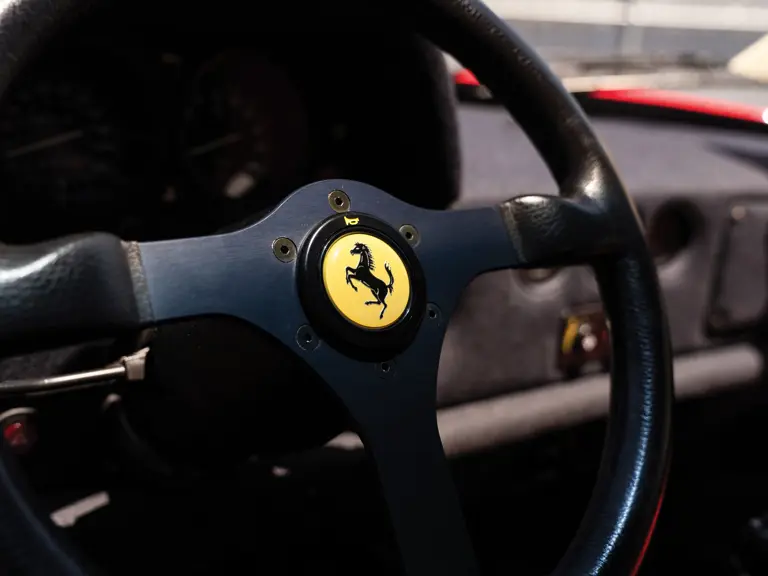


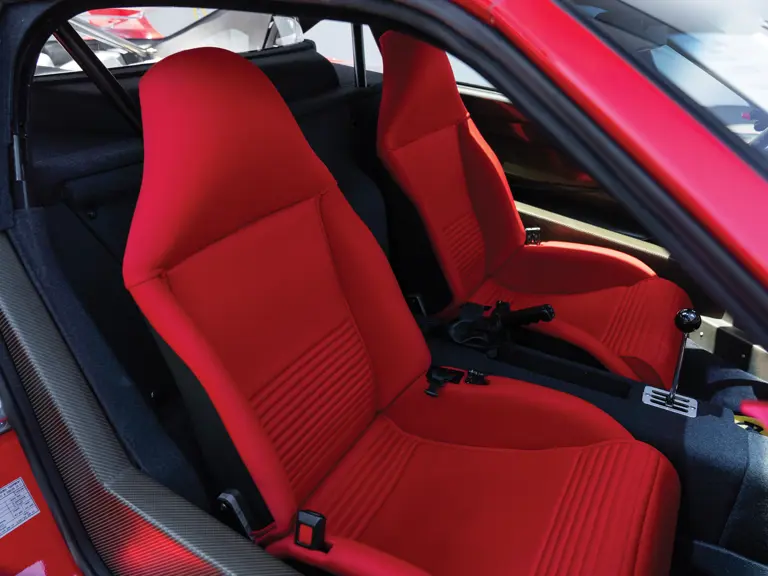
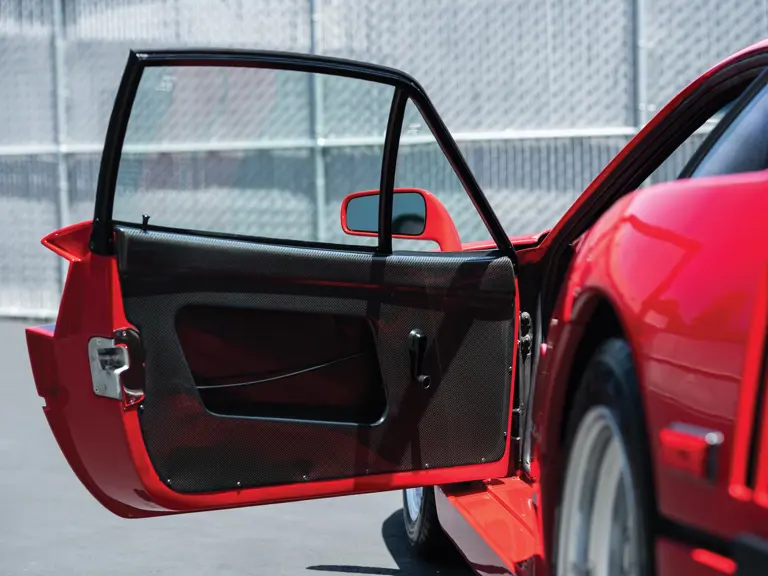

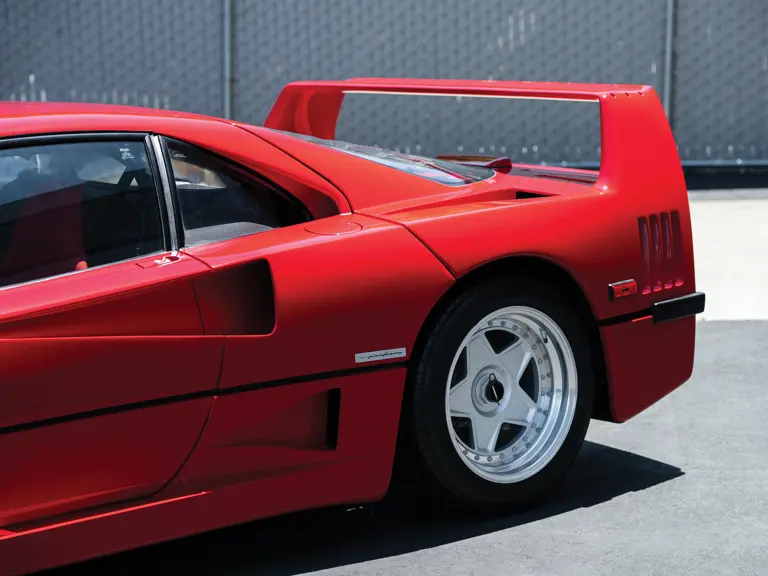

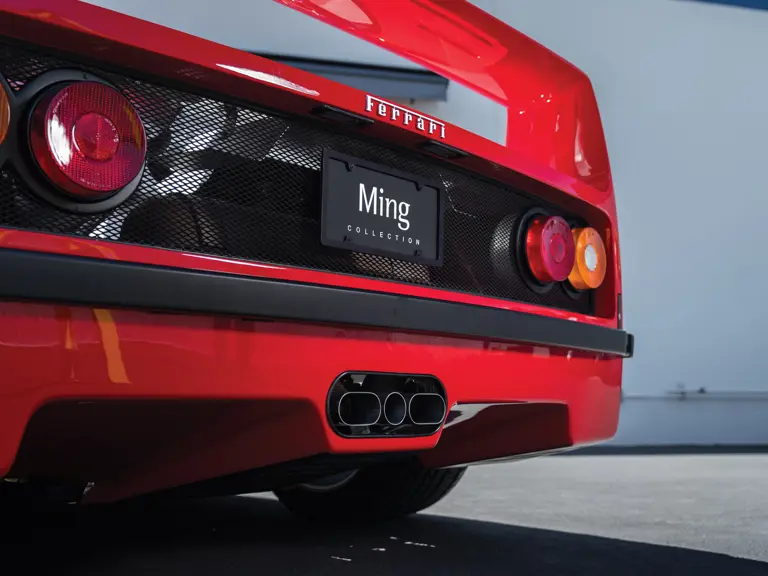











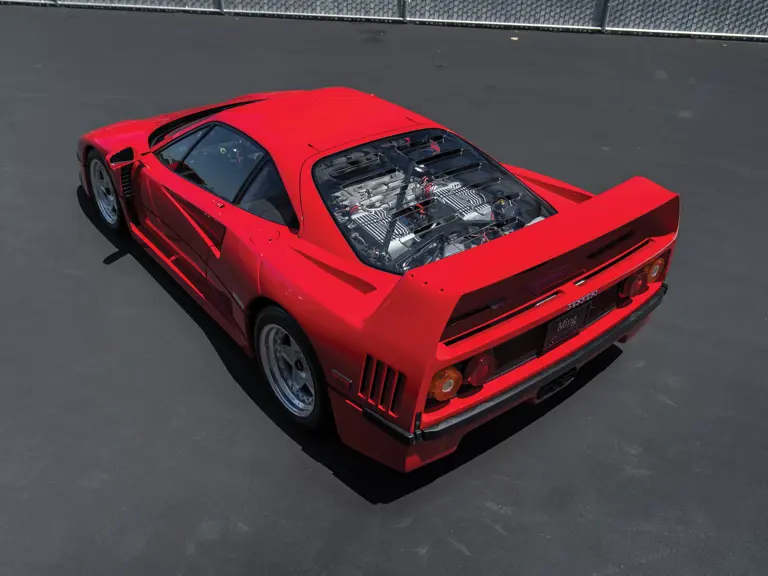

 | Monterey, California
| Monterey, California

